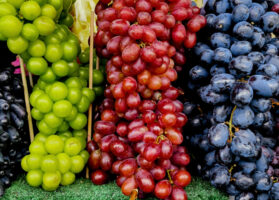Chilean citrus exports decreased by 32% this season
Overview of citrus from Chile in the U.S. market, complemented by charts from Agronometrics. Original published on February 24, 2023.
The 2022 season for Chilean citrus was 32 percent lower than the previous season, making it the lowest in recent years.
In total, citrus shipments were 268,100 tons, as reported by Simfruit. Of total exports, 33 percent correspond to mandarins; 30 percent to oranges; 21 percent to lemons; and 16 percent to clementines.

Source: USDA Market News via Agronometrics.
(Agronometrics users can view this chart with live updates here)
As the main destination market, the U.S. received 87 percent of what was shipped, while the remaining volume was exported to the Far East (8 percent), Latin America (3 percent) and Europe (1 percent).
Chilean mandarin exports reached 89,130 tons, reflecting 27 percent lower volume compared to the 2021 season. Nearly all of this volume (97 percent) had the U.S. as its destination market.
As for oranges, exports were 43 percent lower, reaching 80,623 tons. The main destination market was the U.S. with 92 percent of shipments.
Lemons, for their part, had a drop of 21 percent, and a total shipment of 56,260 tons. Just over half (55 percent) of the lemons were exported to the U.S., while 38 percent of the shipments went to the Far East, 6 percent to Europe, and the rest to Latin America and Canada.
In the case of clementines, the volume was 39 percent less than the previous season, reaching 42,090 tons of exports, with the U.S. being the main destination market, with 99 percent of the total shipments.
In an analysis of the Chilean citrus 2022 season, the president of the ASOEX BB #:156234 Citrus Committee, Juan Enrique Ortúzar, points out that the season was complicated, although the logistical problems were fewer than those experienced by summer fruit. However, he assures that while the increase in sea freight costs and logistics at the destination have not yet normalized, they are factors that should be “balanced under more favorable conditions.”
Regarding the possibility that the situation in the fruit export sector will be reversed in the short term, Ortúzar says, “the problem today is that after COVID, inflation is something that is hitting developed countries, which are those who set the tone for the world market for counter-season products. The problems [are] caused by inflation, and it seems that one of them is the contraction of household consumption, so this is going to affect the cycles that we could anticipate.”
Ortúzar continued, saying that the focus of 2023 must be to “learn and improve quickly, review what we do, share experience among producers, collaborate to generate greater scale at all levels, collaborate and be very competitive, because the offer does not stop growing, both in Chile and in competing countries such as Peru and South Africa. We have to collaborate to continue promoting – together — the Chilean citrus brand, the best reputation for quality and condition to become the preferred origin of customers.”
Likewise, he stresses that the role of the committee is “to become the forum for collaboration in technical and productive matters, but also to strengthen research to increasingly improve quality, so that the consistency of the product allows us to strengthen the demand for our citrus fruits.”
The News in Charts is a collection of stories from the industry complemented by charts from Agronometrics to help better tell their story.
Access the original article with this (Link)






